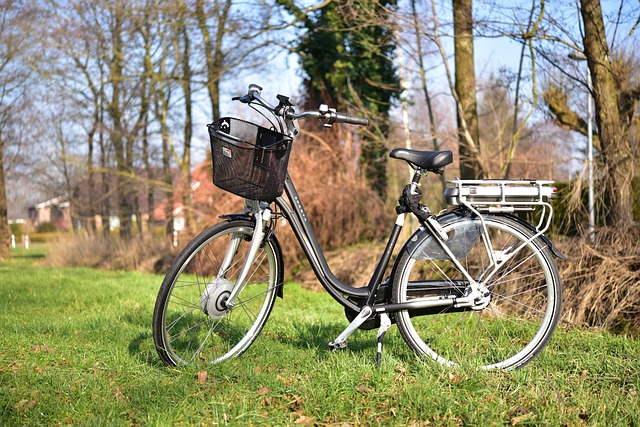You might be wondering how long it will take to bike 4 miles. That is dependent on a variety of elements, such as the terrain, the weather, and your level of fitness. But generally speaking, it takes about 25 minutes to bike 4 miles.
In this article, we’ll look at a few of the variables that may affect how long it takes to bike 4 miles, as well as the typical times for various speeds.
Table of Contents
How Long Does It Take to Bike 4 Miles?
Assuming you’re in reasonable shape and you’re not pedaling uphill the whole way, you can probably expect to bike 4 miles in about 18 – 25 minutes.
A rider’s average speed has a significant impact on how long it takes to complete 4 miles of biking. You have probably heard of the speed = distance/time formula right? Let’s put it into practice and examine how your speed affects how long it takes to ride 4 miles.
Also read: Difference between men’s and women’s bikes
It would take you roughly 20 minutes to bike 4 miles if you were traveling at a moderate 12 mph. That’s not too bad!
However, if you were to bike 4 miles at a leisurely 6 miles per hour, it would take you about 40 minutes.
| Speed (miles per hour) | Time Taken (minutes) |
| 6mph | 40 minutes |
| 8mph | 30 minutes |
| 10mph | 24 minutes |
| 12mph | 20 minutes |
| 14mph | 17 minutes |
| 16mph | 15 minutes |
| 18mph | 13 minutes |
| 20mph | 12 minutes |
How Long Does It Take to Bike 4 Miles Casually?
A little more challenging is figuring out how long it will take to bike 4 miles at a leisurely pace.
It depends on how fast you usually ride “causally”. It takes about 40 to 50 minutes to bike 4 miles at a casual pace because most people, in my opinion, would ride at an average speed of about 5 to 6 mph.
Read about
Is 4 Miles a Lot to Bike?
The answer depends on a few factors, presuming you’re asking whether four miles is a lot to bike in one trip. Four miles is not a long distance if you are in reasonable shape and are used to biking. Four miles can be a significant distance if you are in poor physical condition or are new to biking.
In addition, the surface you are biking on matters. Four miles is not bad if you’re on level ground, but if there are hills involved, it might be harder. Overall, four miles is not a particularly difficult distance to bike, but it can be depending on your level of fitness and the terrain.

Is 4 Miles a Good Bike Ride?
It’s a great way to get some exercise and fresh air to ride a bike for four miles. Furthermore, it’s a great way to unwind and clear your mind. When determining your route, you should consider a few things.
To begin with, confirm that the terrain is appropriate for biking. It might be best to stick to flat terrain if you are new to biking or are not accustomed to riding on hills. Second, map out your route beforehand so you can know where you’re going and how long it will take you to get there.
Bring a water bottle and a snack with you so you can fuel up during the ride.
Factors That Effects
Our main time prediction accounts for a number of variables that can affect how long it takes to bike 4 miles. Let’s look at some of these here:
Curves
Curves in the road make you work harder because they require more effort from your muscles, which means they take longer to complete.
Wind
Wind resistance can slow you down, especially if the wind is blowing at your back or side.
Increased speed or headwinds result in greater wind resistance.
Climate
For example, if it’s cold outside then it will take longer to reach your destination because you’ll have to put on more layers of clothing.
In contrast, if it’s hot outside, you’ll be able to pedal farther per mile than someone who rides in cooler weather and you’ll burn more calories while doing so.
Fitness Level
You can travel farther and faster the faster you can ride.
If you move quickly for the first few minutes of your journey, you’ll be able to keep up with the rest of the group at a faster pace than if you’re struggling to keep up and feeling worn out after 4 miles.
Traffic
It should be fairly obvious that traffic significantly affects how long it takes to bike 4 miles.
If there is little to no traffic, you can complete the 4 miles much more quickly; in the presence of traffic, however, it takes longer because you must ride slowly.
The Terrain Factors
The terrain is one of the most important determinants of your finishing time, even though a variety of factors affect your biking speed and distance. There are three terrains in the bike riding described below:
Flat Road
A mile can usually be completed in 3 to 4 minutes while bicycling on a flat surface. With no significant obstacles, hills, or difficult maneuvers along this kind of route, the terrain is nearly flat and the route is nearly smooth. You’ll be able to cycle 10 miles through flat terrain in 30 to 40 minutes if you can maintain a speed of 17 to 18 mph (miles per hour) while doing so.
Mountainous Road
To complete the same mile while riding on mountainous roads, it is simple to count backwards. For an amateur cyclist, the speed reduction in a hilly area compared to a flat one is much greater than it is for a professional.
Downhill Road
You can complete a downhill mile ride in about one minute or slightly less. One of the most thrilling cycling competition formats is downhill racing. The speeds reached in such circumstances are astounding because gravity is pulling you downward at an even faster rate. If you descend against the wind, which will force you from behind, it will go much more quickly.
Physiological States
The human body performs the same function as an engine when riding. Your physical condition determines how much energy you can muster to ride it. But there are other factors at play besides just your level of fitness. Numerous factors exist, some of which are completely beyond your control. One of the things that influences the decline in your biking speed is age.
The physiological variations in male and female bodies are another factor. Cycling speeds between men and women are different because of this. The amount of hemoglobin and blood in women’s bodies is lower than that of men’s. Testosterone, which is beneficial for men as well, further improves performance. In contrast, women experience numerous hormonal changes throughout their lives, particularly as they age and approach menopause. Their ability to maintain muscular mass is significantly impacted by this.
Another important factor that affects weight is how much you can pedal. This is due to the fact that 4 miles can take different amounts of time overall.
Psychological Power
Two elements should be taken into account when determining a cyclist’s performance: perception and competence. Due to a false impression, you might be tempted to reduce your effort before achieving your peak. You might feel uneasy when you see a hill up ahead, so slow down now. You may feel more discomfort and inconvenience if you concentrate on the challenges and obstacles.
With their elbows tucked in and their torsos forward to reduce drag, seasoned riders assume their ideal posture. They naturally anticipate how to alter their rhythm to best suit a circumstance and make use of the surrounding environment.
Different Mechanical Type
The bike has its own function in mechanical aspects. Your bike’s type determines the top speed it can travel. To meet individual needs, there are various bike types available. The most common types of bikes are road bikes, mountain bikes, and hybrids.
The lightest and fastest type of bike is the road bike. They typically have drop bar style handlebars that allow the rider to alter their posture depending on the situation and a light frame made of aluminum or carbon fiber. Road bikes are made to be ridden on smooth, level terrain, which is the best surface for keeping a steady pace. When compared to other types of bikes, a cyclist can achieve the highest average speeds.
Mountain and hybrid bikes are not at all moderate and are primarily made for off-road riding. Additionally, they have wider profiles, which make them more susceptible to drag, and they are made of a heavier material to withstand difficult riding conditions.

Conclusion
Cycling is an excellent way to burn calories and increase endurance when trying to lose weight. However, biking can be very difficult. It’s best to start out with short distances if you’re new to the sport and gradually increase it as you get more experienced.
This will keep your body in shape, assist in injury prevention, and enhance cardiovascular health. You should now be aware of how long it takes to bike four miles.
FAQs
How Many Calories Can You Burn on a 4 Mile Bike Ride?
Women will burn around 190 calories and men will burn around 225 calories while biking 4 miles. Assuming you are physically fit and not perspiring excessively, this is. Less calories will be expended if you pedal 4 miles at a slow pace as opposed to a fast one. Less calories are burned when you move more slowly.
How Long Does It Take to Bike 4.5 Miles?
It will take you 30 to 40 minutes to bike 4.5 miles (7 kilometers) if you are an average cyclist. This assumes that the weather is nice and there are no hills or traffic
What is the Best Bike for Biking 4 Miles?
Your height, level of exercise, and preferred style of biking will all influence the best bike for you.
The weight of the bike and the absence of children can significantly influence choices. When shopping online, compare prices, features, and benefits of various bike brands.
How Fast Can I Bike 4 Miles on Flat Ground?
Most bikes have a top speed of 30 miles per hour, but if you choose a carbon fiber bike or add gear shifting technology to extend your biking distance, you can increase that speed.
Unfortunately, there is no such thing as a bike that will transport you quickly to the next community by itself; instead, achieving optimal cycling fitness and riding proficiency involves a lot more variables.
Most people believe bicycles are only for kids who want unlimited speed or that many bicycles are used for one-way trips. However, changing gears can increase performance quite quickly, even when traveling at speeds over 30 mph.
While this is true, there are other ideas that could completely change society, such as trading bikes and not having to return items if you are unhappy with your purchase.
How Far Could You Ride When First Starting Out?
Your top speed will depend on a variety of factors, including your fitness level and overall health, if you’re new to the sport. if you find it challenging or difficult to bike 4 miles.
First, do it in an area where there are no potential hazards from traffic. When starting an exercise regimen, consider enrolling in group classes that offer personal training sessions, nutritional guidance, and more encouragement from other participants.
Which is Faster – Human Or Bike Power?
There is no difference between bike power and human power. This translates to relatively consistent speed and low effort required to ride a bicycle. The fastest mode of transportation is now a bike. Bike power may not be the best option for everyone, though, as humans are much more powerful than bicycles in terms of movement and motor skills.
How Can I Make My Biking Experience More Enjoyable?
One way to make biking more pleasurable is to ride in a quiet neighborhood or park. This will enable you to take in the sights, sounds, and solitude of nature while biking. A helmet, cycling shoes, and loose-fitting clothing are essential when biking. It’s also important to hydrate well before, during, and after your ride. Finally, purchase the bike that is best suited to your riding style and body type.
Is It Better to Cycle in the Morning Or Evening?
Cycling in the morning is always preferable because it’s cooler and there are fewer cars on the roads. Bike riding in the evening is an option as well, though, if you want to have the same amount of fun at the end of the day.
How Do Hills Affect My Cycling Performance?
Performance on hills is detrimental to cycling. Generally speaking, cycling uphill requires more effort from your muscles and heart than cycling downhill. This can lead to fatigue, decreased speed, and even injury.



